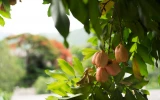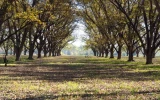Do Pecan Trees Produce Every Year & When?
If you have an established pecan tree in your backyard and you see it producing plenty of crops in one year and then declining in production the next year, you’d probably think there is something wrong with its growth. Don't worry; this is completely natural. Below is an article explaining this phenomenon and answering whether pecan trees produce nuts every year or not.
Pecan trees do not produce an abundance of nuts every year. They exhibit an alternate bearing cycle wherein they produce a heavy crop of nuts in one year followed by a lighter crop the next year. Various factors, such as climate, the age of the tree, water, and nutrient availability, can influence nut production.
Now that you know this phenomenon is part of the natural growth cycle of these trees, it's time to dive into more detailed topics like nut production, tree care, and the factors that affect the growth of pecan trees.
Summary
- Pecan trees have an alternate bearing cycle, which causes them to produce heavy crops one year and light ones the next.
- Pecan trees begin producing fruits around 4–6 years after planting.
- Pecan nuts can be harvested from October to December, and their growing season takes a few months from April to September.
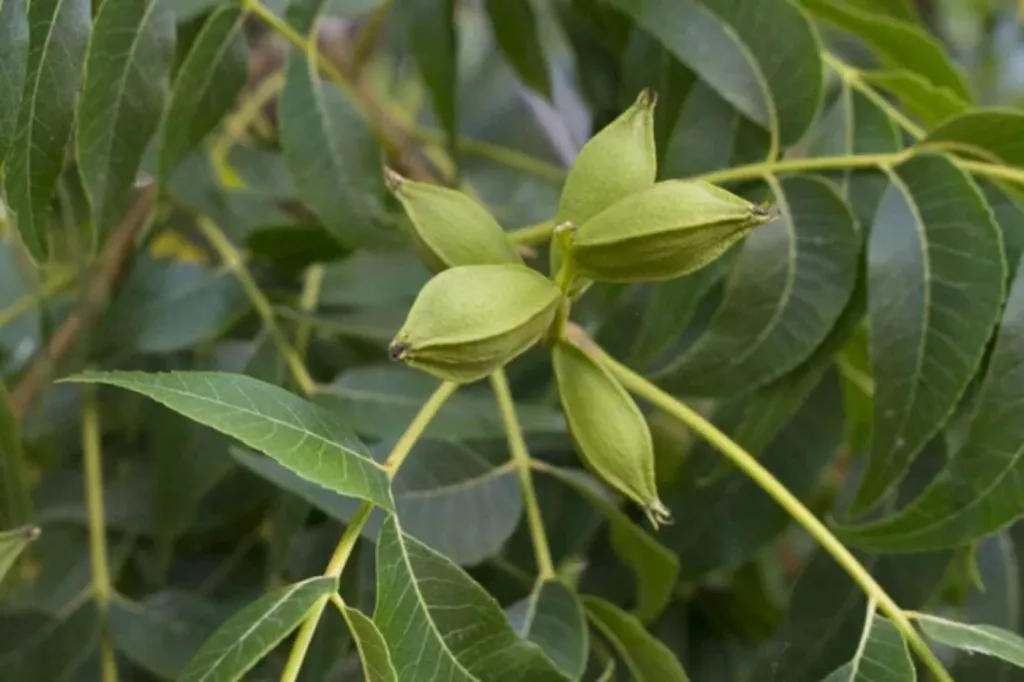
On this page:
Pecan Trees Have an Alternate Bearing Cycle
It can take anywhere from 4–6 years for a pecan tree to start bearing fruit. But if your aim is focused on commercial production, it will only bear enough fruits to satisfy market demand at 8 years of age.
Pecan trees only mature fully around 20–25 years old, but their height increases by 2–4 feet every year since they are fast growers. Once established, they only grow by 5–12 inches per year, and a healthy tree can produce around 200–250 pounds of pecans in a good year.
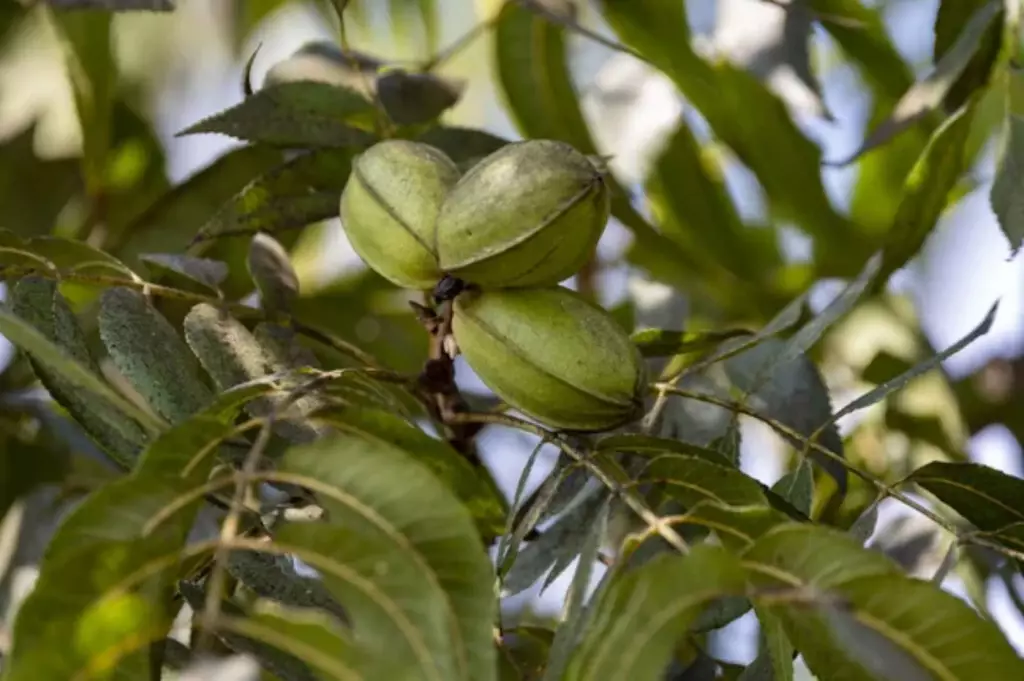
However, contrary to what one might hope, pecan trees do not produce abundantly every year. These trees have a unique tendency to produce in alternate years, with a heavier crop one year and a lighter one the following year. This phenomenon is known as an alternate bearing cycle and is a common characteristic in pecan trees and other hardwood forest trees.
If you’re a pecan tree owner, you might experience inconsistent yields annually due to this natural phenomenon. Since pecan trees produce inconsistently, you’ll be lucky enough if you have good nut production every 4 or 5 years. But this can only be attained if you provide adequate water and proper maintenance to maintain an even production.
The harvest season for pecans typically falls between October and December. During the months of April through September, the tree focuses on growth, preparing it to produce nuts in the fall. But sometimes, pecans may begin falling as early as September, so you should be prepared before then.
Pecan production is usually affected by factors such as the age of the tree, water adequacy, nutrient availability, and climate. We’ll get to know more about these factors as you keep reading below.
Factors Affecting Pecan Production
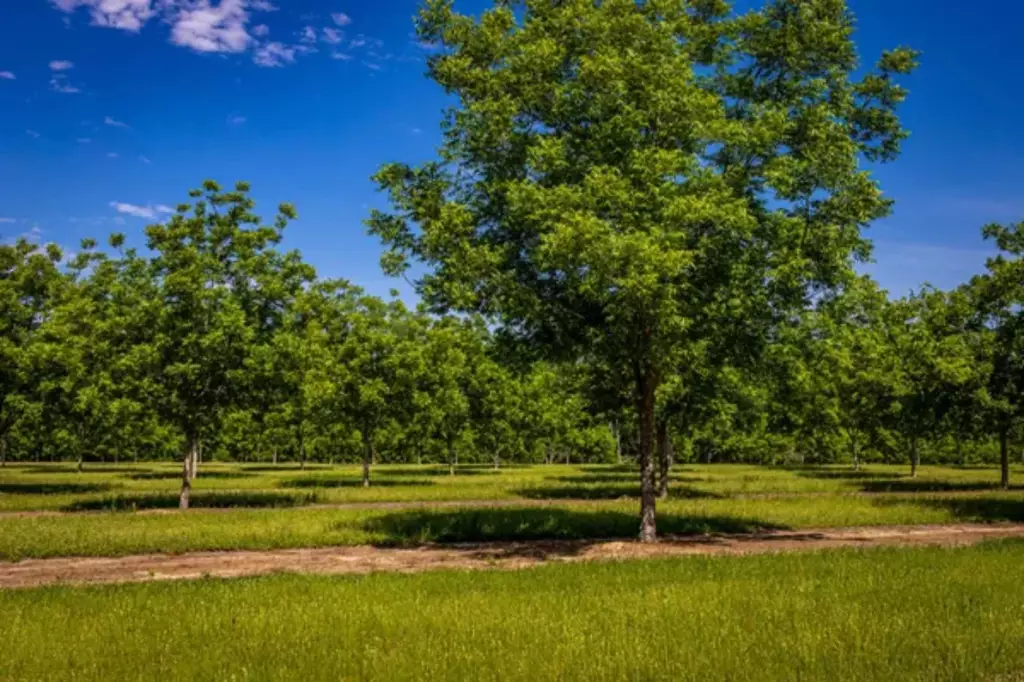
The age of the tree affects the nut production
Pecan trees take anywhere from 4 to 6 years to bear fruit. You might need to put in a bit of time and effort to produce enough pecans to meet demand.
To sum up how age affects production: young trees may not produce a large crop until they are several years old, while older trees may become less productive as they age.
Climate and growing season impact nut production
The growing season for pecans is between April and September, while the harvest season is between October and December. Weather conditions during the growing season can significantly impact the alternate bearing cycle of pecan trees.
A warm and dry growing season can lead to a larger crop in the following year, while a cool and wet season can result in a smaller crop.
Water is a critical factor in the growth and production of pecan trees
Pecan trees need enough water to produce a good crop. On average, a pecan tree requires 1 to 2 inches of water per week. Inadequate water supply can lead to lower crop yields.
Here are a few scenarios showing the importance of water in pecan production:
- During the early stages of nut development, the tree requires adequate water to ensure that the nuts grow to their full potential. A lack of water during this stage can result in smaller nuts, lower yields, and reduced quality.
- Without enough water, the leaves of the pecan tree may wilt, and the tree may not be able to produce enough energy to support nut development.
- A lack of water can weaken the tree, making it more susceptible to pests and diseases. Over time, this can lead to reduced yields and lower-quality nuts.
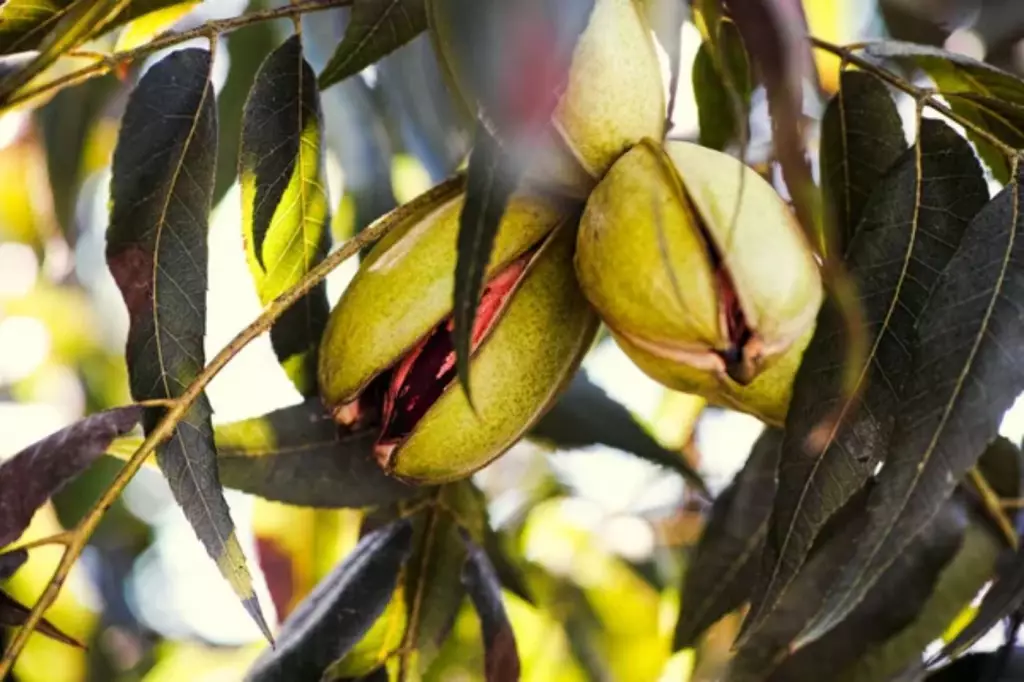
Nut load, size, and quality can affect pecan production
The amount, quality, and size of nuts that a pecan tree produces each year can bring about an alternate bearing cycle. Trees that produce plenty of crops that are large and of high quality in one year may have fewer resources available to produce another large crop the following year, leading to a smaller crop or no crop at all.
Nutrient availability and photosynthesis are important in consistent nut production
To ensure high-yield years for your trees, you may need to make sure that they have a proper nutrient supply and are efficiently conducting photosynthesis.
A lack of nutrients can lead to reduced yields and lower-quality nuts. For example, a lack of zinc can inhibit nut production and produce abnormal leaves that hinder photosynthesis from taking place. To avoid this, perhaps consider applying fertilizer to ensure that the tree has access to all the nutrients it needs to produce high-quality nuts.
Harvesting and Gathering Pecans
At this point, you are already informed that pecan trees produce inconsistent crops, but they do produce each year, whether heavily or lightly. Still, there are factors that can affect this alternate bearing cycle, and to lessen such instances and maintain even production, you may need to take them into account when you grow pecan trees.
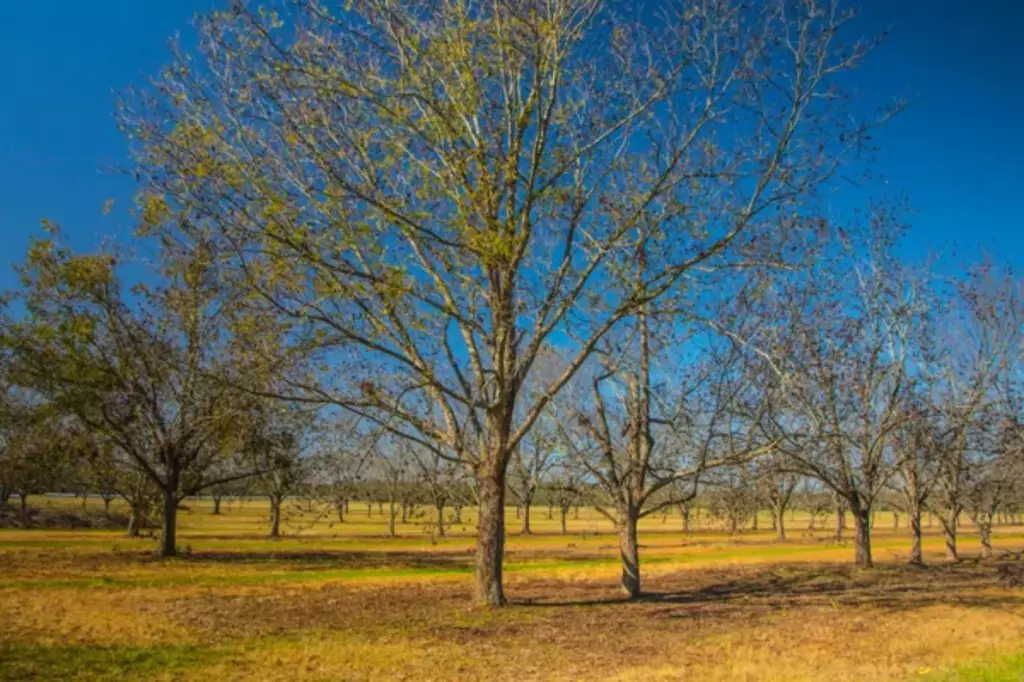
Now, during the harvest season of pecan trees, which is around October to December, the pecans will naturally fall to the ground when they're ready. As you walk beneath your pecan tree, you'll notice the ground covered with these delicious nuts. Before they get damaged by pests or moisture, you might need to harvest them as quickly as possible.
-
When harvesting pecans, you can simply stoop down and pick them up. You could use a container such as a five-gallon bucket to store your gathered nuts. If you have a larger quantity to harvest, there are other methods, like using a rake or a nut-gathering tool, to speed up the process.
-
After collecting your pecans, you may want to store them properly to maintain their freshness and quality. Whole pecans, still in their shells, can be stored at 32 to 45 °F (0–7 °C) for up to a year.
-
If you've already shelled the pecans, you'll need to store them in a cool place, ideally at 0 °F (-17 °C), where they can last for two or more years. Harvesting and gathering pecans involves a bit of effort, but the reward of enjoying these delectable and nutritious nuts is well worth it.
